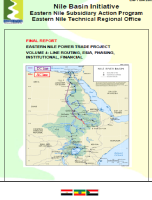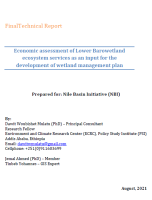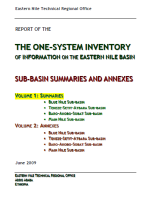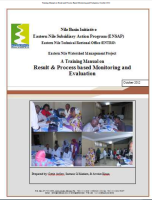Abstract
Volume 4 of the Report of the Regional Power Interconnection Feasibility Study, which is Phase II of the Eastern Nile Power Trade Program. It contains reports from three study modules:
• M2: Line Routing, containing the methodology used for the line routing study (network studies, desk study, site visits and the proposed line routing), and the electronic version of the proposed line routing in Google Earth format. It covers technical, economic and environmental aspects of the location of substations, descriptions of and impacts on the line route corridors, and the characterization of angle points of the interconnection (Mandaya, Rabak/Kosti, Naga Hammadi).
• M3: Environmental and Social Impact Assessment, with an initial appraisal of the environmental and social impacts of the proposed interconnection, undertaken to relevant Ethiopian, Sudanese and Egyptian Legislation and Standards, as well as African Development Bank Guidelines. It covers the existing bio-physical environment and socio-economic conditions of the project-affected areas in Ethiopia, Sudan and Egypt; describes the project’s principal potential impacts and mitigations during the construction and operational phases; presents an environmental and social management plan for the project; describes the institutional strengthening expected to manage and monitor the project; gives a consolidated environmental monitoring plan for the project; presents the public consultations held as part of the Study; provides an indicative summary of costs of environmental mitigation and enhancement measures, management and monitoring; presents conclusions drawn from screening the project in a global and regional context; and lists the conclusions reached about further actions required to move the project forward.
• M6: Phasing and Arrangement, giving proposals regarding the construction of the interconnection with and without anticipation (i.e. commissioning part of, or the whole, regional interconnection in specified years), in several lots (i.e., for AC and DC overhead lines construction; HVDC and SVC substations work, and control centres). An implementation arrangement is also proposed depending on cost estimates and estimated time to execute the works, engineering, procurement, control and management activities for line and station buildings.
• M7: Institutional Analysis, proposing a global institutional model emphasizing the necessity of a collaborative approach, with multilateral agreements and multilateral institutions, to finance, build, own and operate the Egypt-Sudan-Ethiopian power interconnection. It details key points of the institutional framework deemed necessary for a successful integration of this large infrastructure project, presents a risk analysis, and emphasizes the need for a multinational interconnection regulation agency to ensure the development of the framework within which exchanges will occur, with compliance to transparent and non-discriminatory rules. It presents an implementation road map, from financing and political agreements to long-term operation in a fully open and competitive market.
• M8: Financial and Economic Analysis, analysing the conditions for the financial profitability and viability of the interconnection: (i) Project income (kWh transmitted, transmission tariff); (ii) Project costs (investment, OM, corporate income tax…); and (iii) Financial costs (cost of equity and debt, etc.). In order to devise a financial scheme and recommend tariff mechanisms that secure shareholder investments (loan reimbursement and interests, dividends) and satisfy end-users’ expectations (available interconnection to export or import a cheaper hydraulic electricity), the study determined optimal levels of transmission tariffs under different configurations of financing and pricing. It also carried out an exhaustive sensitivity analysis, based on key technical and financial parameters, and also presents an updated economic analysis.



